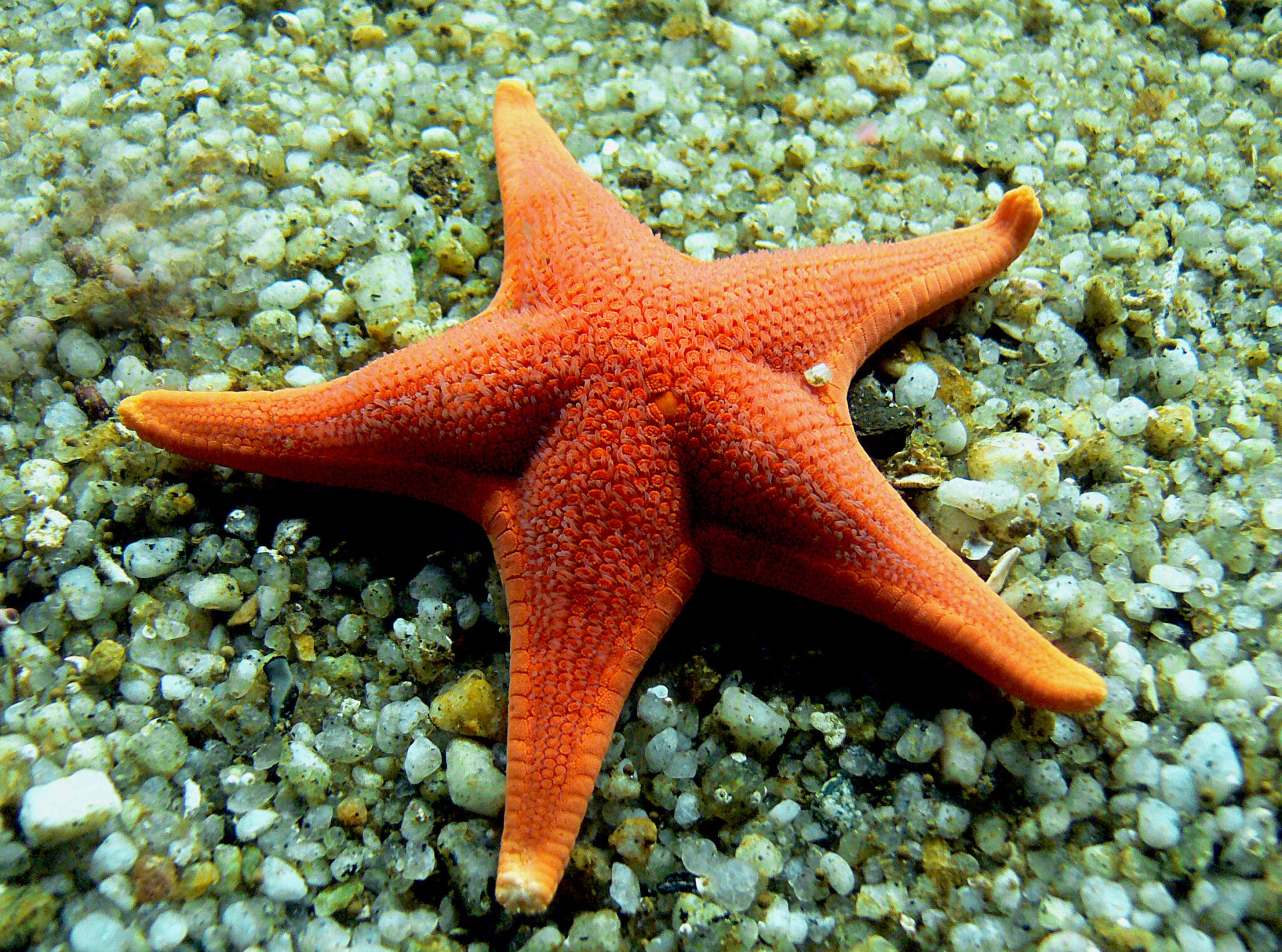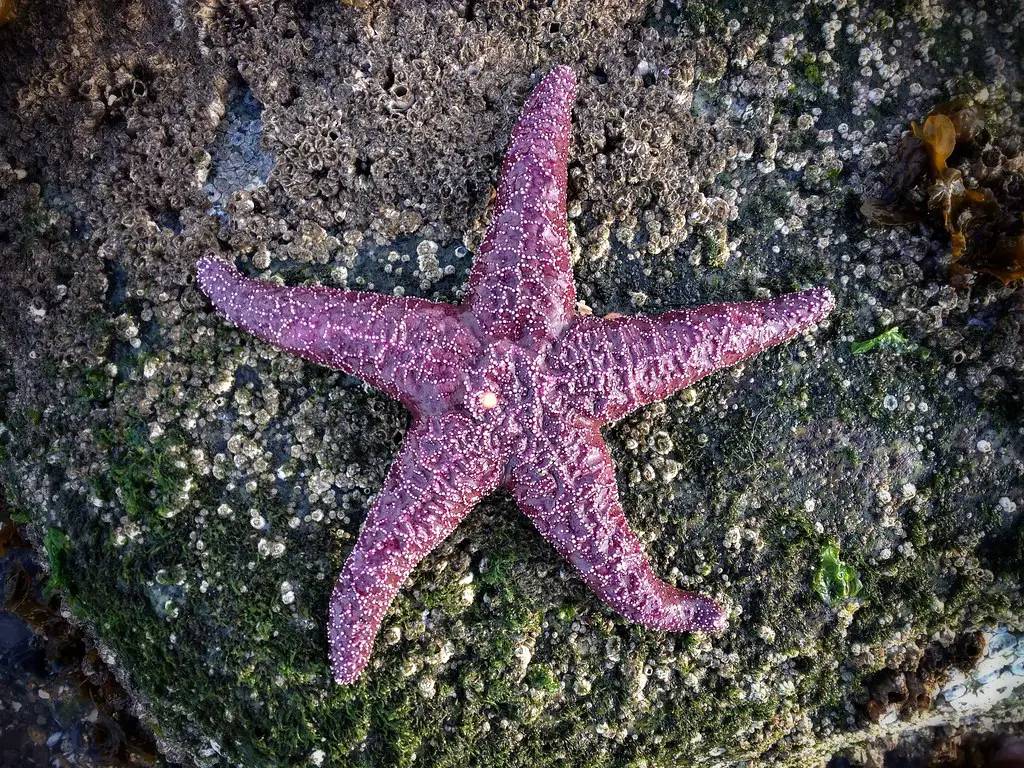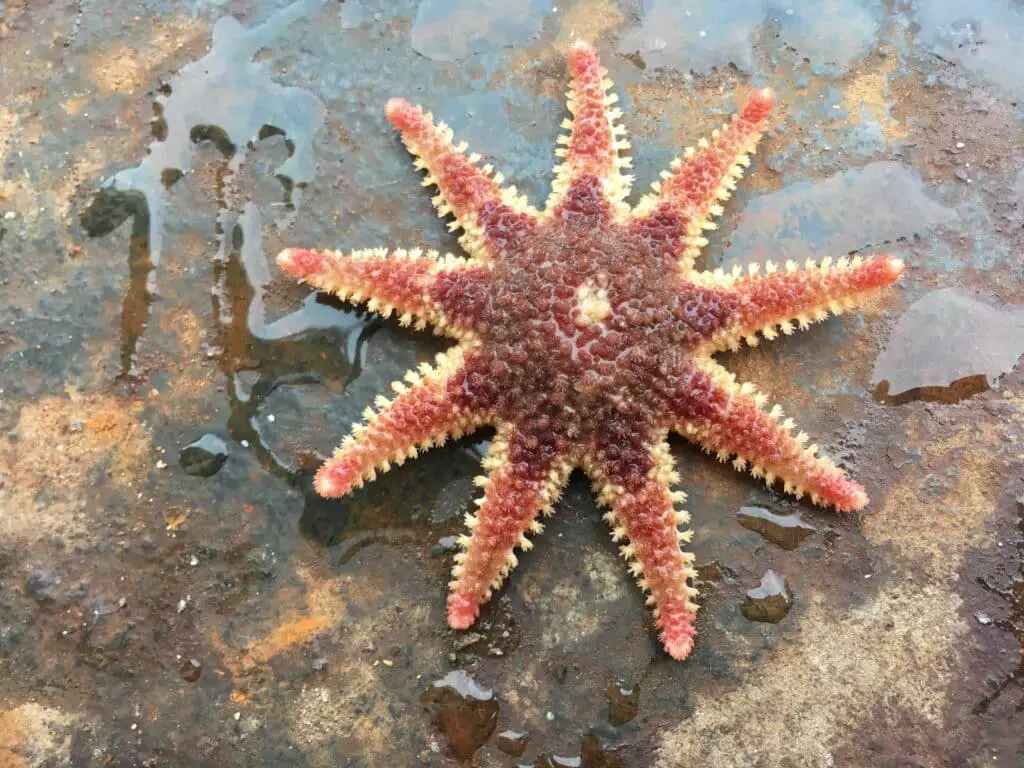Are Starfish Alive

Introduction
Are Starfish Alive: The mesmerizing world beneath the ocean’s surface is a realm of wonders, a tapestry of life that has captured the imagination of scientists, divers, and nature enthusiasts for generations. Within this liquid domain, one creature that frequently captures attention is the starfish, also known as the sea star. With their striking appearance, distinctive arm-like structures, and unique abilities, starfish have long been a source of fascination and intrigue.
However, there’s a question that often arises when we encounter these marine enigmas: Are starfish alive? At first glance, one might assume that these seemingly inert creatures are lifeless ornaments of the sea, their mesmerizing shapes and vibrant colors mere remnants of a bygone existence. Yet, this assumption belies the remarkable truth about starfish—these creatures are indeed very much alive, boasting an array of adaptations and behaviors that set them apart in the intricate tapestry of marine life.
In this exploration, we embark on a journey into the world of starfish to unravel the mysteries surrounding their existence. We will delve into the biology and physiology of these creatures, shedding light on their unique characteristics, from their water vascular system to their regenerative capabilities. We will also explore their behaviors, from locomotion to predation, and how these behaviors reveal the pulse of life coursing through their bodies.
As we venture deeper into the question of whether starfish are alive, we will come to appreciate the intricacies of these marine marvels and the vital roles they play in the ecosystems they inhabit. We will dispel the notion that they are mere oceanic curiosities and instead unveil the vibrant, living beings that starfish truly are, reminding us once again of the astounding diversity and wonders that abound in the world’s oceans.

Are starfish considered alive?
Starfish belong to the class Asteroidea, derived from the Greek words “aster” (a star) and “eidos“ (form, likeness, appearance). There are more than 1600 species of starfish alive today, and they have an important role in the community structure of the ocean floor.
Yes, starfish are indeed considered alive. Despite their unusual appearance and behaviors, starfish are living organisms classified as echinoderms. They belong to the phylum Echinodermata and are marine animals adapted to life in the ocean. Like all living organisms, starfish exhibit the characteristics of life, including growth, metabolism, response to stimuli, reproduction, and the ability to adapt to their environment. They possess various systems and organs, such as a water vascular system for movement and respiration, a nervous system, and reproductive organs, which all contribute to their status as living beings.
Starfish exhibit unique adaptations and behaviors that reflect their living nature. They are capable of responding to their surroundings, capturing prey, regenerating lost body parts, and reproducing. These characteristics are consistent with the criteria used to define life in the biological sciences.
Can starfish die?
As mentioned above, they can die from stress. How do you know if a starfish is dead? When starfish die, they lose their coloration and even begin to disintegrate or lose limbs.
Yes, starfish, like all living organisms, can die. Death is a natural part of the life cycle, and starfish, despite their regenerative abilities and resilience, are not immortal. Various factors can contribute to the death of starfish, including environmental stressors, disease, predation, and human impacts.
Environmental stressors such as changes in temperature, pollution, or alterations in their habitat can have adverse effects on starfish and lead to their demise. Disease outbreaks can also affect starfish populations, causing illness and mortality.
Predation is another factor that can lead to the death of individual starfish. While starfish are predators themselves, they are also preyed upon by various marine animals, including certain fish, birds, and other predators.
Human impacts, such as habitat destruction, pollution, and collection for the aquarium trade, can also threaten starfish populations and contribute to their mortality.
It’s essential to recognize that starfish, like all creatures, have a finite lifespan, and their individual lifespans can vary depending on the species, environmental conditions, and other factors. When a starfish dies, its body may decompose, and its nutrients can be returned to the ecosystem, contributing to the cycle of life in the marine environment.
Do starfish feel pain?
Starfish also have receptors throughout their skin that sense pressure, temperature and pain much as ours do. Their skin has chemoreceptors, which give them the extremely well-developed sense of smell they use to hunt prey and avoid predators.
The question of whether starfish feel pain is a topic of debate and scientific inquiry. Unlike mammals and some other animals, starfish lack a centralized nervous system and a brain, which are typically associated with the capacity to perceive pain in more complex animals. Instead, starfish have a decentralized nervous system, with clusters of nerve cells called ganglia distributed throughout their bodies.
While starfish exhibit behaviors that suggest they can respond to various stimuli, such as changes in their environment or the presence of potential prey, it is unclear whether these responses indicate the experience of pain as humans or mammals might perceive it. Scientific research on the ability of starfish to experience pain is limited, and there is no consensus in the scientific community on this matter.
It’s important to approach this question with caution and consider that the capacity to perceive pain can vary among different species. In the absence of definitive evidence, many researchers and experts in animal welfare advocate for ethical treatment of starfish and other animals and recommend minimizing stress or harm to them whenever possible.
Do starfish give birth?
Reproduction: Sea stars are broadcast spawners. Males release sperm into the water and females release eggs. The fertilized eggs hatch into a larval form that lives as plankton, sometimes for months, before settling on the sea floor in its adult form.
Starfish, also known as sea stars, do not give birth in the way mammals or some other animals do. Instead, they reproduce through a process known as external fertilization. In external fertilization, male starfish release sperm into the surrounding water, while female starfish release eggs. Fertilization occurs when these gametes (sperm and eggs) meet and unite in the open water.
After fertilization, the eggs develop into free-swimming larvae. These larvae go through various stages of development as they drift in the ocean currents. Eventually, they settle on the ocean floor and undergo metamorphosis, transforming into juvenile starfish. These juveniles grow into mature starfish through a process of growth and regeneration.
So, starfish do not give birth to live young in the way mammals do. Instead, they release their gametes into the water, and the subsequent development of their offspring occurs in the open ocean before settling on the seafloor and maturing into adult starfish. This reproductive strategy is well-suited to their marine environment, where water currents play a crucial role in dispersing gametes and facilitating fertilization.
Are starfish intelligent?
SNAILS, jellyfish and starfish have taught us that you don’t need a brain to learn. These seemingly simple creatures are capable learners, despite being completely brainless. Perhaps this is no great surprise.
Starfish, also known as sea stars, are marine invertebrates with a decentralized nervous system. While they exhibit a range of fascinating behaviors and adaptations, intelligence, as understood in mammals or some other highly evolved animals, is not a characteristic typically associated with starfish.
Starfish do not possess a brain or centralized processing center like mammals. Instead, they have a network of nerve cells called ganglia distributed throughout their bodies. These ganglia allow starfish to respond to their environment, detect changes in light, temperature, and water chemistry, and exhibit basic behaviors such as foraging, navigation, and escaping from predators.
While starfish are not considered highly intelligent in the way humans or some other animals are, they do display remarkable adaptations for survival and resource acquisition. For example, they can regenerate lost body parts, navigate complex underwater environments, and exhibit coordinated movements to capture prey. These behaviors are more reflective of their evolutionary adaptations and sensory capabilities than traditional concepts of intelligence.
What is the lifespan of a starfish?
35 years
Starfish use filtered sea water to pump nutrients through their nervous system. 2. They can live up to 35 years.
The lifespan of a starfish can vary depending on the species, environmental conditions, and other factors. In general, starfish are relatively long-lived for marine invertebrates. Their lifespans typically range from a few years to several decades, with some species known to live for up to 35 years or more in the right conditions.
Smaller species of starfish tend to have shorter lifespans, often in the range of 3 to 5 years. Larger species, on the other hand, can live longer. Factors that can influence the lifespan of a starfish include habitat quality, availability of food, predation pressure, and the presence of disease or environmental stressors.
Starfish have the capacity for remarkable regenerative abilities, which can contribute to their overall longevity. If they lose an arm or part of their central disk due to predation or injury, they can often regenerate the lost body parts, effectively extending their lifespan.
It’s important to note that the specific lifespan of a starfish can vary widely between species, and not all starfish within the same species will live for the same duration. Lifespan is one of many factors that contribute to the complex ecology and biology of these marine creatures.
Do starfish have gender?
Most species of starfish are gonochorous, there being separate male and female individuals. These are usually not distinguishable externally as the gonads cannot be seen, but their sex is apparent when they spawn.
Starfish do not have traditional male and female genders as humans or many other animals do. Instead, starfish are typically dioecious, which means that individuals of a species can be either male or female, but a single individual does not possess both male and female reproductive organs simultaneously.
In dioecious starfish species, male and female starfish release their gametes (sperm and eggs) into the surrounding water during the reproductive process. External fertilization occurs when the sperm and eggs meet in the open water, leading to the development of starfish larvae.
The differentiation between male and female starfish is often not externally visible, as their reproductive organs are located within their bodies. The distinction becomes apparent during the reproductive season when they release their gametes.
However, there are some exceptions among starfish species. A few species are hermaphroditic, meaning that they have both male and female reproductive organs within the same individual. In such cases, they can potentially reproduce with other hermaphroditic starfish or with individuals from dioecious species.
In summary, starfish typically have separate male and female individuals, but some species are hermaphroditic. Reproduction in starfish involves the release of gametes into the water, where fertilization occurs externally.
Can starfish come back alive?
While most species require the central body to be intact in order to regenerate arms, a few tropical species can grow an entirely new starfish from just a portion of a severed limb. Starfish regeneration across species follows a common three-phase model and can take up to a year or longer to complete.
Starfish, also known as sea stars, have a remarkable ability to regenerate lost body parts and recover from injuries, which might give the impression that they can “come back alive” after sustaining damage. While they do exhibit impressive regenerative capabilities, it’s important to clarify that they do not come back to life in the way that we typically think of resurrection. Instead, their ability to regenerate is a result of their biology and unique adaptations.
When a starfish loses one or more of its arms due to predation, injury, or other factors, it can often regenerate those lost body parts. The process of regeneration involves the division and growth of cells at the site of the injury. Over time, a new arm or body section develops, eventually restoring the starfish to its normal appearance.
The extent of regeneration and the time it takes can vary depending on several factors, including the species of starfish, the size of the lost body part, and the overall health of the individual. In some cases, a starfish may not fully regenerate a lost arm or may have a slightly different appearance after regeneration.
It’s important to note that the regenerative capabilities of starfish are limited to their own body parts and do not extend to bringing a completely dead or decomposed starfish back to life. Once a starfish has died, it cannot be revived through regeneration or any other means.
In summary, while starfish possess remarkable regenerative abilities that allow them to recover from injuries and regenerate lost body parts, they do not have the ability to come back to life once they have died. Their regenerative capacity is a fascinating adaptation that contributes to their resilience and survival in the marine environment.

Conclusion
In the depths of our Earth’s oceans, where the sun’s rays struggle to penetrate and darkness reigns, a vibrant and mysterious world unfolds—a world where starfish, those seemingly enigmatic creatures, play their part. In our quest to answer the question, “Are starfish alive?” we have unraveled the captivating truth about these marine wonders.
As our exploration has revealed, starfish are undeniably alive, boasting a suite of remarkable adaptations that set them apart in the intricate mosaic of ocean life. From their water vascular system, a hydraulic marvel that enables movement and respiration, to their ability to regenerate lost limbs, starfish exemplify the tenacity and diversity of life in the marine realm.
We have observed how starfish actively pursue life, whether through their predatory behaviors, intricate navigation, or participation in the delicate balance of their ecosystems. Their presence, often overlooked as mere oceanic adornments, is, in fact, pivotal to the health and equilibrium of their habitats.
Yet, our quest to understand starfish goes beyond their biological existence. It reminds us of the enduring allure of the natural world, where life’s manifestations often defy expectations and challenge our understanding. It underscores the importance of curiosity and exploration in the face of the unknown, for it is through these pursuits that we come to appreciate the complexities and wonders of life on our planet.
we celebrate the starfish as vibrant, living beings that grace the ocean’s depths, their existence an ode to the enduring mysteries of the deep blue. The answer to the question, “Are starfish alive?” is a resounding affirmation of life’s inexhaustible diversity and the enduring wonder of our oceans—a reminder that beneath the surface, a world of awe and discovery awaits those willing to dive deeper.



